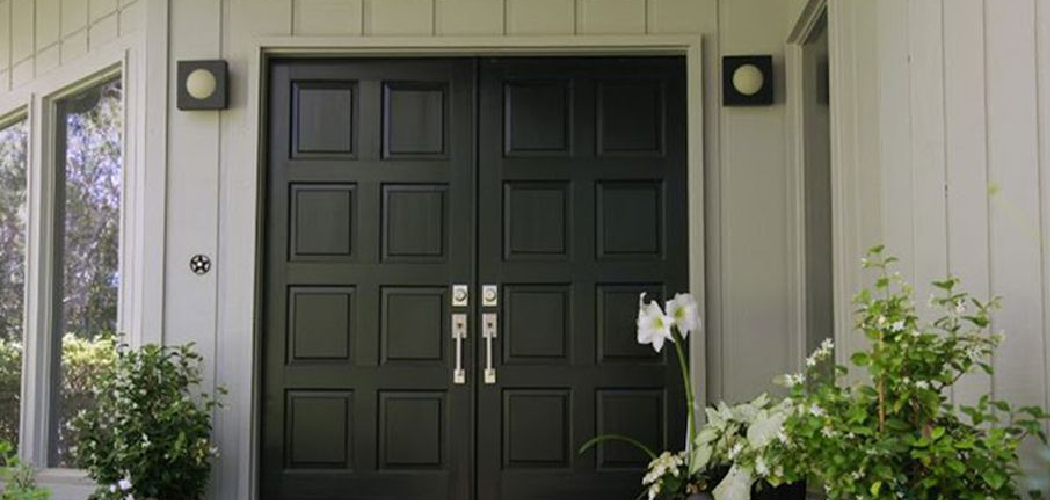Securing double doors is critical to property safety, safeguarding against unauthorized entries and potential breaches. This guide outlines how to secure double doors, emphasizing the importance of such measures in both residential and commercial settings.
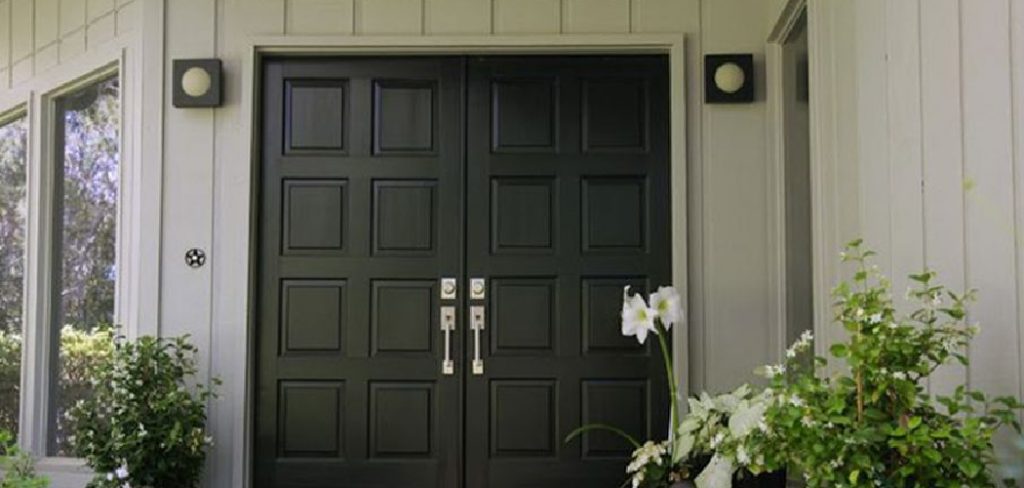
Double doors, with their unique vulnerabilities due to their size and mechanics, require specialized security strategies to ensure their integrity. From assessing potential weak points to implementing advanced locking mechanisms and surveillance, this document will explore a variety of tactics designed to fortify double doors against intrusion.
By understanding and applying these strategies, property owners can significantly enhance the security of their double doors, thereby preventing unauthorized access and reinforcing overall property safety.
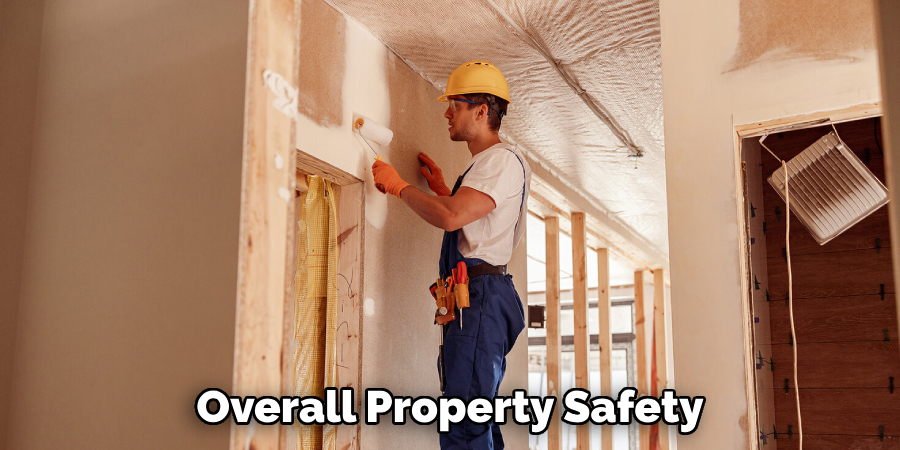
Assessing Security Needs
A. Identifying Vulnerabilities: Evaluating Weak Points in Double Door Systems, Such as Locks, Hinges, and Frames
The first step in enhancing the security of double doors is to identify potential vulnerabilities within the door system itself. Weaknesses in locks, hinges, and door frames can serve as easy entry points for intruders. Traditional locks might not offer sufficient resistance against picking or drilling, making high-security alternatives necessary.
Similarly, hinges exposed on the outside of the door can be tampered with or removed, allowing doors to be taken off their frames entirely. If not properly reinforced, the door frame can be one of the most significant vulnerabilities, as it can be subjected to forceful attacks that can pry the door open.
B. Understanding Potential Threats: Recognizing Risks and Threats That Double Doors May Face, Including Burglary, Forced Entry, and Vandalism
Double doors are not only entry points but can also be attractive targets for burglaries, forced entries, and vandalism. Burglars often exploit the perceived weakness of double doors to gain access to properties. Forced entry methods, such as kicking, using crowbars, or employing lock snapping, are common threats that double doors face.
Vandalism can also compromise the door’s structural integrity, making it easier to breach. Understanding these potential threats is crucial to choosing the right security measures that can effectively counteract these risks.
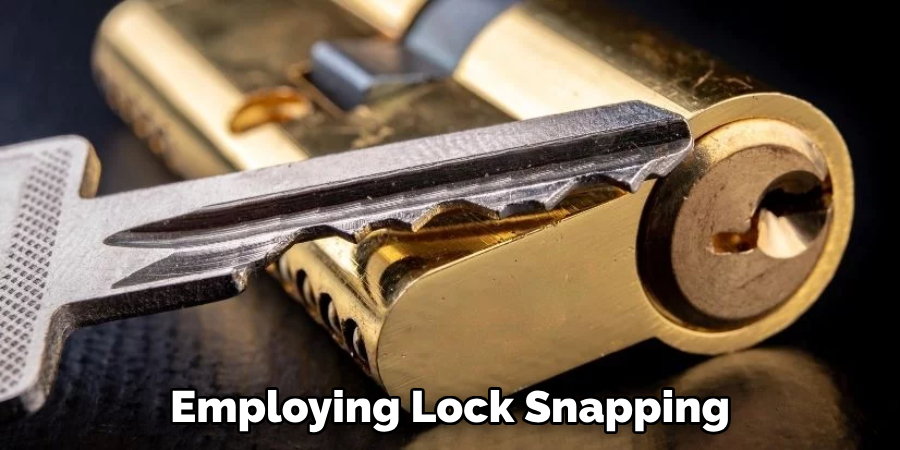
C. Considering Property Type and Location: Tailoring Security Measures to Meet the Unique Needs of Residential Homes, Businesses, or Public Buildings
Double doors’ security needs vary significantly depending on the property type and location. Residential homes may prioritize aesthetic appeal alongside security, requiring solutions that blend seamlessly with the home’s exterior.
Businesses, especially those holding valuable inventory or sensitive information, may need more robust security measures, such as advanced locking mechanisms or monitored access control systems. Subject to heavy foot traffic, public buildings must balance security needs with accessibility and compliance with safety regulations.
Tailoring security measures to match the property’s specific needs ensures effective protection without compromising functionality or legal obligations.
How to Secure Double Doors: Reinforcing Door Hardware
Enhancing the security of double doors involves a multi-faceted approach focused on strengthening door hardware to resist various forms of forced entry. This comprehensive strategy is pivotal for homeowners and business proprietors alike, aiming to secure their premises against unauthorized access.
A. Upgrading Locks
The core of door security lies in its locks. Installing high-security deadbolts, which are resistant to picking, drilling, and bumping, significantly enhances a door’s integrity against intrusion. Double-cylinder locks offer an additional layer of security, requiring a key to operate from both inside and outside, thus preventing burglars from easily opening the door even if they manage to break a window to reach the lock.
Smart lock systems present a modern solution, combining convenience with security by allowing doors to be locked and unlocked remotely through mobile devices. These systems often include features such as access logs, giving property owners the ability to monitor entry and exit in real time.
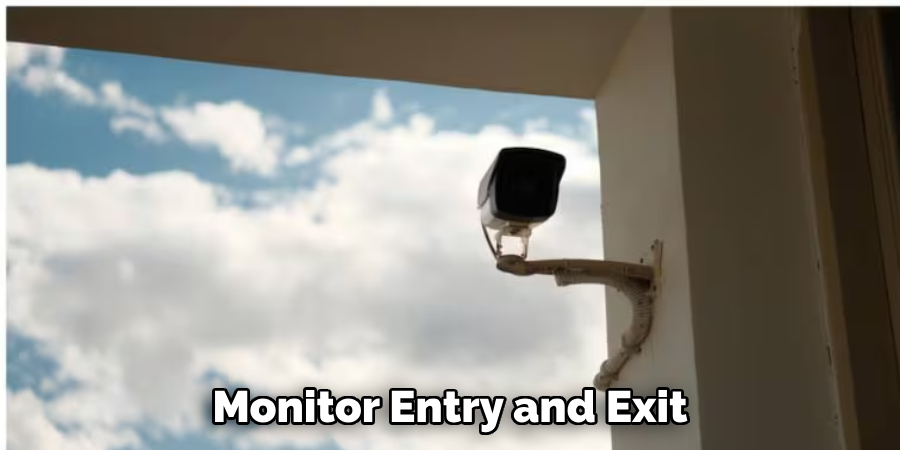
B. Strengthening Hinges
The durability and reliability of door hinges are critical in preventing door separation and forced entry. Upgrading to heavy-duty hinges, designed to withstand high levels of force, is a straightforward yet effective method to enhance door security.
For an added layer of protection, hinge reinforcement kits can be installed. These kits include longer screws that anchor the hinge and door frame more securely into the wall’s structure, significantly reducing the risk of the door being forced open or off its hinges.
C. Installing Security Bars
Door security bars and latch guards offer a physical barrier to forced entry, deterring would-be intruders. Security bars are placed across the interior side of double doors, bracing them against attempts to kick or push the door open.
Latch guards cover the gap between the door and its frame, protecting the latch from being tampered with by tools like crowbars. Security bars and latch guards are effective means to reinforce door frames and prevent pry bar attacks, ensuring enhanced security for double doors.
Implementing these reinforcements in door hardware plays a significant role in how to secure double doors effectively. By focusing on upgrading locks, strengthening hinges, and installing security bars, property owners can create a formidable barrier against unauthorized entry, safeguarding their premises and providing peace of mind.
How to Secure Double Doors: Adding Additional Security Features
In conjunction with reinforcing door hardware, integrating additional security features can further enhance the protection of double doors against unauthorized access and potential threats. These features serve as deterrents and as means to monitor and respond to security breaches.
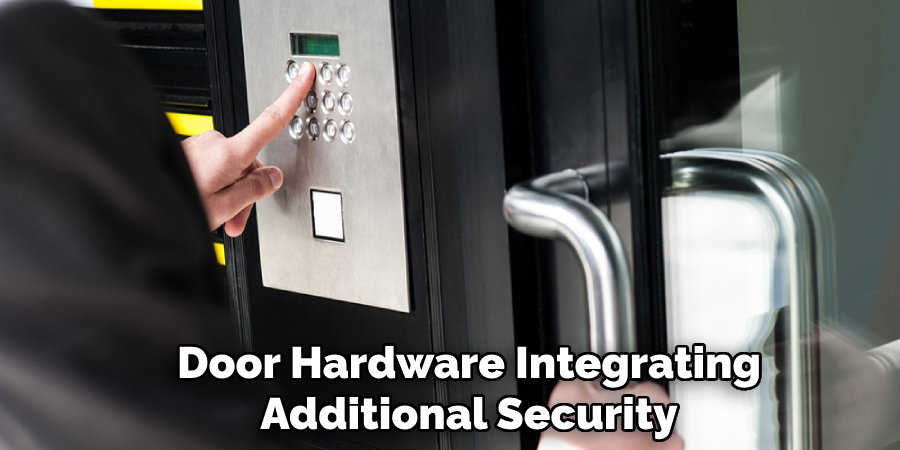
A. Door Bolts and Chains
Installing surface-mounted door bolts or security chains can provide an extra layer of security when doors are closed. Door bolts, especially those made of heavy-duty materials and installed at both the top and bottom of the door, make it significantly harder for intruders to force the door open.
Security chains offer an added advantage by allowing the door to be opened slightly to see outside while still keeping it secured against full opening. These tools are effective in enhancing personal safety and property security.
B. Security Grilles or Screens
Mounting security grilles or metal screens over double doors can provide robust protection against intrusion attempts while allowing for ventilation and visibility. These grilles or screens, often made from hard-to-cut materials, act as a physical barrier that is difficult to bypass without making considerable noise, thereby acting as an effective deterrent.
They are particularly useful in areas where doors need to be opened for airflow without compromising on security, offering a balance between protection and functionality.
C. Security Cameras and Alarms
Integrating surveillance cameras, motion sensors, and alarm systems represents a modern approach to security, enabling property owners to monitor and alert against suspicious activity around double doors. Security cameras can be strategically placed to cover all angles of entry, offering real-time video feeds that can be accessed remotely.
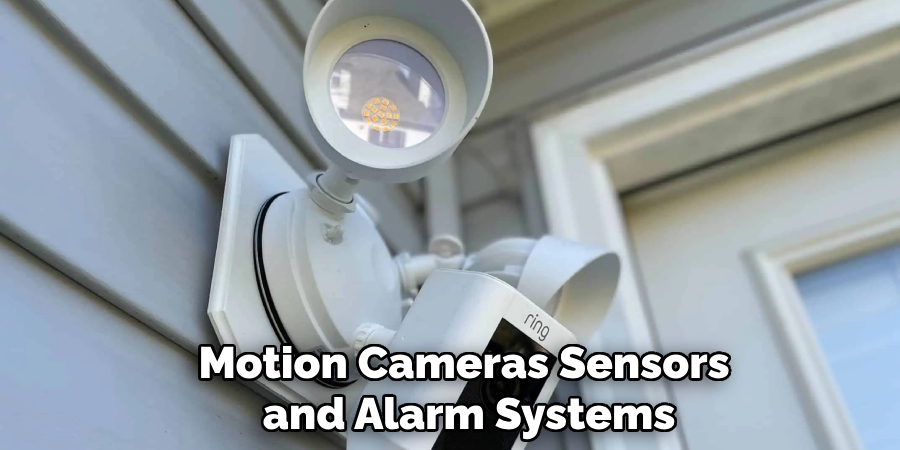
Motion sensors add an additional layer of security by detecting movement and triggering alarms or notifications to the property owner or security services. Alarm systems, when triggered, can create a loud noise to deter burglars and alert nearby individuals to the attempted breach.
Together, these electronic security measures offer a comprehensive solution to monitoring and responding to security threats, providing peace of mind to property owners.
By incorporating these additional security features, property owners can significantly enhance the security of double doors, deterring unauthorized access while ensuring a safe and secure environment.
Enhancing Physical Barriers
Building a more secure entryway goes beyond locks and alarms; it involves bolstering the physical barriers that stand between the interior and potential external threats. Enhancing these aspects can significantly mitigate the risk of forced entry, adding layers of security to double doors.

A. Installing Door Reinforcement Plates
To fortify doors against kick-in attacks, property owners should consider the installation of steel door reinforcement plates or Door Jamb Armor. These measures strengthen the door frame and the area around the lock, making the door more resistant to forceful attacks.
Reinforcement plates can be mounted on both the door and its frame, providing a metal shield that distributes force more evenly and prevents the wood from splitting. This upgrade is especially crucial for exterior double doors, which often serve as primary entry points.
B. Adding Door Stops
Another effective strategy is using floor-mounted door stops or wedges, which can prevent doors from being forced open or dramatically slamming shut. These devices offer a simple yet effective physical barrier, adding an extra layer of security.
Floor-mounted stops, which are bolted to the ground, provide significant resistance to the door being pushed inward, serving not only as a precaution against unauthorized entry but also as a protective measure for the door’s integrity against strong winds or physical impact.
C. Implementing Panic Hardware
For buildings that require secure yet accessible exit routes, installing panic bars or exit devices on double doors is essential. Panic hardware allows for quick and safe egress during emergencies, enabling doors to be easily opened from the inside without compromising security from the outside.
These devices are particularly useful in high-occupancy settings like offices, schools, and commercial buildings, where swift evacuation might be needed. Panic bars can also be integrated with alarm systems to alert when the door is used, adding a layer of security monitoring.
By enhancing physical barriers by adding door reinforcement plates, door stops, and panic hardware, property owners can significantly improve the resilience of double doors against external threats. These measures deter potential intruders and ensure a safer environment for occupants, striking a balance between security and functionality.
Implementing Access Control Measures
In an era where security is paramount, implementing sophisticated access control measures is crucial for enhancing the safety of premises protected by double doors. These measures restrict entry to authorized individuals and provide a means to monitor and control access effectively.
A. Keyless Entry Systems
Adopting keyless entry systems, such as keypads or biometric readers, offers a high level of security and convenience. By deploying these technologies, property owners can eliminate the risk of lost or stolen keys, as access codes or biometric data cannot be easily duplicated.
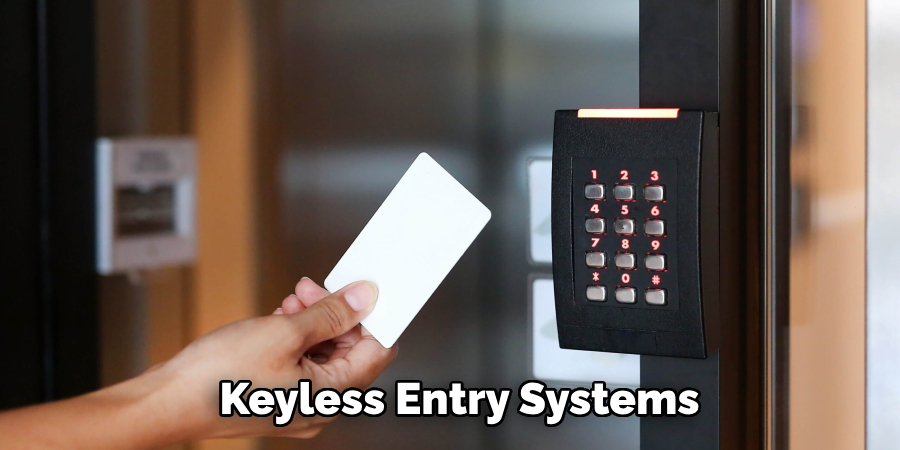
Keyless entry systems allow for the customization of access permissions, ensuring that only authorized personnel can enter specific areas at designated times. Furthermore, many of these systems keep access logs, providing valuable data on entry and exit times, which can be critical in the event of a security breach.
B. Key Management
Effective key management is vital for maintaining the integrity of a traditional lock and key system. Establishing strict policies and practices around key distribution, usage, and return can significantly reduce the risk of unauthorized key duplication or access.
This includes maintaining a log of keys issued, conducting regular audits, and promptly changing locks and reissuing keys if a security breach is suspected. Limiting the number of master keys and using patented keys that cannot be copied without authorization are also practical approaches to key management.
C. Intercom Systems
Installing intercom systems or video doorbells enhances security by enabling property owners or security personnel to visually verify visitors before granting access. This technology deters potential intruders and adds a layer of convenience, allowing for remote operation.
In multi-tenant buildings or gated communities, intercom systems can be integrated with keyless entry or electronic locks to provide a seamless access control solution that combines verification with the flexibility of remote entry management.
By implementing these access control measures, property owners can significantly improve the security of double doors, ensure that access is restricted to authorized individuals, and enhance the overall safety of the premises.
Maintaining Proper Lighting and Surveillance
In the comprehensive approach to enhancing the security of double doors, maintaining proper lighting and surveillance plays a crucial role in deterring intruders and increasing overall safety. Properly implemented, these measures can make a significant difference in securing premises after dark and creating a safer environment for occupants.
A. Exterior Lighting
Installing bright, strategically placed exterior lighting around double doors is a powerful deterrent to potential intruders. Effective lighting illuminates entry points, removing shadows and dark areas where trespassers could hide. Motion-activated lights add an extra layer of security, startling intruders and alerting occupants to movement outside.
Additionally, well-lit entrances improve visibility for camera surveillance, ensuring clear images are captured and making it easier for individuals to navigate their entry and exit during nighttime hours.
B. Security Signage
Visible security signage and decals play a vital psychological role in securing a property. Signs that indicate the presence of surveillance cameras, alarm systems, or monitoring services can significantly deter criminal activity.
When potential intruders know that a property is under surveillance or protected by security measures, the risk of detection and consequent legal repercussions often outweigh the perceived rewards of unauthorized entry.
C. Regular Surveillance
Implementing surveillance cameras offers real-time monitoring of double-door areas, providing a visual deterrent to crime and enabling prompt response to security threats.
Strategically placed cameras record critical footage that can be used for identification and legal purposes and allow for the continuous observation of entry points. In addition to technology-based surveillance, the presence of security guards can offer an immediate response to potential security breaches, combining human intuition and experience with technological aids to secure the premises effectively.
By focusing on maintaining proper lighting and regular surveillance, property owners can significantly enhance the security and safety of areas surrounding double doors, ensuring a well-monitored and well-lit environment that discourages unauthorized access.
Legal and Ethical Considerations
Ensuring the security of double doors, while crucial, requires navigating complex legal and ethical considerations to protect the rights and safety of all individuals involved.
A. Compliance with Regulations
Property owners and security professionals must ensure that all security measures for double doors comply with relevant building codes, accessibility standards, and security regulations.
This includes adhering to guidelines that ensure entrances are accessible to individuals with disabilities, respecting egress requirements, and following fire safety regulations. Compliance ensures legal protection and promotes a safe and inclusive environment for all occupants.
B. Respect for Privacy
While implementing surveillance and access control systems is essential for security, balancing these measures with respect for individual privacy and civil liberties is imperative.
This involves carefully considering the placement of cameras to avoid intrusive monitoring and ensuring that data collection and storage comply with privacy laws and ethical standards. Transparent communication about security policies and practices with all affected individuals can help maintain trust and respect for privacy.
C. Ethical Use of Force
The application of physical security measures, such as locks, barriers, and the potential use of security personnel, should always be guided by principles of restraint and ethical judgment. Using force to protect property, particularly in preventing unauthorized access through double doors, must be proportional to the encountered threat.
Security strategies should prioritize de-escalation and the safety of all individuals, avoiding unnecessary physical confrontation and ensuring that any measures taken are legally and ethically defensible.
Conclusion
In our comprehensive exploration, we covered an array of strategies and techniques essential for securing double doors. Each measure contributes to a robust security framework, from reinforcing door frames and hardware to implementing access control systems and maintaining proper lighting and surveillance.
We emphasized how to secure double doors is not just about the physical mechanisms but also involves legal and ethical considerations, ensuring that safety measures respect both compliance regulations and individual rights.
The importance of comprehensive security measures and constant vigilance in protecting double-door entrances cannot be overstated. These entry points, often vulnerable due to their design and function, require a layered approach to security that deters, detects, and delays unauthorized access.
We wish you peace of mind and the utmost safety in safeguarding your double-door access points. Remember, securing your property is an ongoing commitment to the safety and security of everyone it encompasses.

